https://www.motherjones.com/politics/2020/05/the-non-paranoid-persons-guide-to-viruses-escaping-from-labs/
The Non-Paranoid Person’s Guide to Viruses Escaping From Labs
Trump’s China-blaming and conspiracy theories have undermined the real debate about the facilities that handle the world’s deadliest pathogens.

Marcin Wolski
Few people in the United States had heard of the Wuhan Institute of Virology (WIV)—the high-security biolab in Wuhan, China, that does cutting-edge research on coronaviruses—until mid-April, when the Trump administration began to imply that it might be the source of SARS-CoV-2, the virus that causes COVID-19. So far the only evidence supporting this idea is the coincidence of COVID-19 breaking out in the same city as the institute, but that’s been enough to feed conspiracy theories for months. Such theories were relegated to the right-wing fringe—even before Rush Limbaugh complained on an April 16 broadcast that “you are a kook if you think that this virus happened in a lab!”—until the administration, feeling the heat for its own inept response, began to embrace them.
The groundwork to do so was laid when two cables from officials at the US Embassy in Beijing were leaked to the Washington Post. The cables had been sent to Washington in 2018 after the officials had visited the Wuhan Institute of Virology—the first lab in China with a Biosafety Level 4 rating, meaning it has the security for working with the world’s most dangerous pathogens—and been told of safety concerns there. “During interactions with scientists at the WIV laboratory, they noted the new lab has a serious shortage of appropriately trained technicians and investigators needed to safely operate this high-containment laboratory,” one of the cables said, urging the government to send additional support to the lab and stressing how important the WIV’s work was for “future emerging coronavirus outbreak prediction and prevention.”
The second leak was more pointed. Fox News, citing unnamed insiders, reported “increasing confidence” that the outbreak had come from the lab. Asked about the report at his briefing, President Trump responded, “More and more, we’re hearing the story.”
Secretary of State Mike Pompeo later pressed the case on The Hugh Hewitt Show, saying, “We know that the first sightings of this occurred within miles of the Wuhan Institute of Virology. We know the history of the facility—the first BSL-4 lab where there’s high-end virus research being conducted took place at that site. We know that the Chinese Communist Party, when it began to evaluate what to do inside of Wuhan, considered whether the WIV was, in fact, the place where this came from. And most importantly, we know they’ve not permitted the world’s scientists to go into that laboratory to evaluate what took place there.”
The motivation to blame China—to point the finger at foreign sloppiness as the true cause of the pandemic—seems clear. In recent weeks, the administration’s argument that it had little advance warning about the coming virus has crumbled. New reports keep making it clear how early and often they were warned, including a claim by ABC News that the first alarms started ringing way back in November, when US intelligence picked up on the outbreak through intercepted communications in China and flagged it as potentially “cataclysmic.” Hence the desperation to shift attention from its own deer-in-the-headlights ineptitude and make China the enemy.
But the Trump administration’s politically motivated attempts to cast blame on the WIV are misguided. If anything, a lab connection would increase American culpability because the work being done at the lab was part of an international project launched in the United States—until now: Shortly after Trump embraced the lab-escape theory, in late April, the administration cut funding to EcoHealth Alliance, which helped fund the WIV lab.
The leaked cables show just how close the relationship is between the WIV and the United States. There’s no sign that the institute reached out to Beijing for extra help back in 2018; instead, it reached out to Washington. But the institute was rebuffed. As the Post reported, “No extra assistance to the labs was provided.”
In the unlikely event that the virus is proven to have a lab connection, that failure to provide more experienced staff may look like an epic blunder by the Trump administration. “The cables raise really serious red flags and it would stand to reason that anybody that received these cables would take steps to figure out whether there was fire underneath the smoke,” Connecticut Sen. Chris Murphy recently told the Post. “But we still have more questions than we have answers about the origin of this virus.”
It’s doubtful we’ll ever pinpoint COVID-19’s origins. Despite many experts’ skepticism, no one I talked to said they could confidently rule out the possibility that it accidentally escaped from a lab that was studying it. But it could also have been carried to Wuhan by anyone who was infected elsewhere, or by an animal that served as an intermediate host. As we’ve seen in the United States, most people infected with SARS-CoV-2 never even know it. Tracing a disease like that back to Patient Zero may be impossible.
Yet it may turn out for the best that the WIV is now in the news. Most people don’t realize how heroic some of its work was or how important to heading off the next pandemic. They also haven’t grasped the danger posed by the work being done at high-security biolabs around the world. Yes, the next pandemic could start from a lab in China. But it could just as easily come from our own backyard.
In recent decades, more diseases have been jumping from animals to humans, a phenomenon called zoonotic spillover. Experts blame our increasing incursions into the natural world. As we convert forests to farms and hunt wild animals, we give viruses new opportunities for spillover.
A major effort to detect and prevent such spillovers began after SARS (Severe Acute Respiratory Syndrome) appeared in southern China in November 2002, infecting a number of people who had connections to a “wet market” where wildlife was sold. SARS eventually killed 774 people around the world by destroying lung cells and triggering severe pneumonia. SARS killed 10 percent of its victims, an extremely high rate, but it wasn’t tremendously contagious, and the world was able to corral it by July 2003.
Virologists soon identified a new coronavirus as the cause of SARS. It resembled other viruses found in bats, which were suspected to be the original hosts. Bats are the natural carriers for many of the world’s worst infectious diseases, including MERS and Ebola, though in bats these viruses rarely cause problems. Bats have hyperactive immune systems that make things difficult for viruses. In most mammals, including us, such aggressive immune responses would trigger lethal inflammation (such as the cytokine storms that kill some COVID-19 patients), but bats also have unique repair mechanisms in their cells that constantly clean up the inflammation. The repair mechanisms are there to fix the wear and tear caused by bats’ intense metabolisms—their hearts can beat a thousand times a minute during flight—but they also allow bats to rev their immune systems 24/7 without destroying themselves. Any battle-hardened viruses that can eke out an existence in such an unfriendly environment can be devastating if they cross over into mammals with weaker defenses, much like an invasive species dropped into a virgin environment.
In 2004, according to Scientific American, a team from the WIV led by virologist Shi Zhengli began visiting caves in southern China, hoping to find the cause of SARS. They captured bats and took blood, saliva, and fecal samples, and tested the samples for viruses back in Wuhan. In 2009, the lab began working with PREDICT, a new program established at USAID to train and fund scientists to test “high-risk” areas for new viruses. By identifying unknown viruses before they spilled over into humans—to “find them before they find us,” as Shi put it—researchers hoped to establish an early-warning system. PREDICT worked in dozens of countries, but the WIV was one of its linchpins, and Shi Zhengli became famous as China’s “Bat Woman.”
In 2013, the WIV discovered SARS-CoV, the cause of SARS, in a cave in Yunnan Province. Shi’s team found that the bats of southern China were full of viruses, especially coronaviruses. Over 10 years, her team collected more than 10,000 samples from bats in the region and discovered hundreds of new coronaviruses, including some with the ability to infect humans. Many bats harbored multiple viruses, and there were alarming signs that the viruses were recombining with each other—swapping chunks of genetic code as they replicated, producing novel viruses with new abilities. “It is highly likely that future SARS- or MERS-like coronavirus outbreaks will originate from bats, and there is an increased probability that this will occur in China,” Shi and her colleagues wrote in a 2019 paper that now seems chillingly prescient. “Therefore, the investigation of bat coronaviruses becomes an urgent issue for the detection of early warning signs.”
SARS and SADS—a related virus that killed 25,000 piglets in 2017—both erupted in southern China, where the most concerning lineage of coronaviruses had been found and where future outbreaks were expected. When authorities alerted Shi on December 30 that a pneumonia outbreak in Wuhan was being caused by a mysterious new coronavirus, she was surprised. “I had never expected this kind of thing to happen in Wuhan, in central China,” she told Scientific American. Wuhan is a skyscraper-filled metropolis of 11 million people hundreds of miles from the bat-friendly caves of southern China. Shi asked herself, “Could they have come from our lab?”
Shi described the next few weeks as the most stressful of her life. She frantically searched her lab’s records, looking for signs of an accident or inappropriate disposal, only relaxing once the genetic code of the new virus was sequenced and didn’t match the coronaviruses in her lab. “That really took a load off my mind,” she said. “I had not slept a wink for days.”
Shi’s lab shouldn’t be completely cleared of possible blame until an independent body can review the lab’s records, which the Chinese government shows no signs of releasing. There’s also the possibility that the source of contamination could have been a CDC-run BSL-2 lab in Wuhan, which has reportedly worked with bat coronaviruses and is remarkably close to the city’s wet market.
In any case, while Shi’s comments were meant to be reassuring, they actually implied something unsettling. Most of us mistakenly believe that the risk of a biolab-based pandemic is infinitesimal. But clearly Shi didn’t rule out an accidental escape from her lab. And, it turns out, she’s not alone. As much as biosecurity experts worry about nature as the source of the next pandemic, they also have grave concerns about labs.
The first big cluster of COVID-19 cases was found in December in people who had connections to Wuhan’s Huanan Seafood Wholesale Market. The market reportedly sold live wild animals. Since the original SARS was likely carried by civets in a “wet market” in southern China, it seemed like a potential culprit, and the Chinese government pushed that narrative. The market was closed on January 1, and the area was scrubbed clean. “The origin of the new coronavirus is the wildlife sold illegally in a Wuhan seafood market,” Gao Fu, the director of China’s Center for Disease Control and Prevention, announced in January.
Media outlets worldwide ran with the wet-market theory. Yet even in January, it was clear that the chances the coronavirus first spilled over in the market were vanishingly small. There’s no evidence it sold live pangolins, another animal thought to be intermediate carriers of bar-borne coronaviruses, but at least one stall may have sold civets. Despite extensive testing of the animals and animal parts that were being sold in the market, none ever tested positive for the virus, according to China’s CDC. The only positive samples were “environmental” and may have been from the sewage.
More importantly, the timing was wrong. According to Chinese government data analyzed by the South China Morning Post, the earliest cases in Hubei Province can be traced to mid-November, weeks before the outbreak at the market. “The virus came into that marketplace before it came out of that marketplace,” Daniel Lucey, an infectious disease specialist at Georgetown University and a fierce critic of the lab-escape theory, told Science in late January. The market was just an amplifier, Mardi Gras in miniature.
Which left no firm explanation for how a virus that had originated in bats in remote caves in southern China had suddenly appeared in downtown Wuhan. Even the most common theories—that it had jumped from the bat to a person or another animal that served as an intermediate host as it traveled to Wuhan—would require a remarkable confluence of events. No wonder then that to some it was like a black hole suddenly opening in the Swiss countryside outside the CERN particle-collider.
It was all perfect fodder for conspiracy-minded bigots like Rush Limbaugh, who didn’t understand the science and immediately spun dark bioweapon fictions about the “ChiCom” government, which were rightly condemned by experts in the field (and which he’s since retracted). SARS-CoV-2’s genome showed no signs of being anything but natural, and five of the world’s top scientists criticized the lab-escape hypothesis in the pages of Nature Medicine. “Our analyses clearly show that SARS-CoV-2 is not a laboratory construct or a purposefully manipulated virus,” they wrote.
But questions remained about whether a bat-cave researcher might have unwittingly carried the natural virus back to Wuhan, or become infected in the lab. Unfortunately, such territory had already been made toxic by the Limbaughs of the world. One of the few scientists to speculate publicly was the well-known Rutgers microbiologist Richard Ebright. “The possibility that SARS-CoV-2 entered humans as a direct result of the activities of PREDICT—during field collection of bats and bat excreta, or during laboratory characterization of bats, bat excreta, or bat viruses—cannot be excluded and cannot be dismissed,” he told me, comparing the idea of actively seeking new viruses in remote places and bringing them back to labs (in densely populated areas) to “looking for a gas leak with a lighted match.”
Ebright’s focus on lab escapes has made him something of a pariah, especially among experts who don’t like to rile the public. But he isn’t alone in legitimizing these concerns. “It’s important to be upfront that we do not have sufficient evidence to exclude entirely the possibility that it escaped from a research lab,” the respected University of Washington biologist Carl Bergstrom wrote on Twitter. Though he called a natural zoonotic spillover “far more plausible,” he cautioned: “Whatever the origin of #SARSCoV2 may have been, going forward we need to carefully assess and manage the risk associated with a range of activities.”
Jonna Mazet, the director of PREDICT, made the case for the WIV’s safety practices, pointing out all the reasons why an accident involving researchers from the WIV was incredibly unlikely. “I’m a scientist,” Mazet said. “I would never say a lab accident was not possible. I’m just saying it’s a lot less likely than a lot of other explanations.” Researchers in the field wear full Tyvek suits and masks, and freeze samples in liquid nitrogen. In the lab, they break viruses into pieces before studying it and do all their work inside biosafety cabinets designed to prevent any escapes. For all those reasons, most mainstream scientists doubt the lab connection. “We have not found evidence to support any theory that the origins of SARS-CoV-2 among humans occurred in a laboratory either intentionally or by accident,” Daniel Lucey recently wrote on the blog of the Infectious Diseases Society of America.
So far, in fact, there is no hard evidence supporting any theory that explains how SARS-CoV-2 wound up in Wuhan. It’s all speculation.
The modern era of pathogen releases can be said to have begun in 1973 in England, when a lab assistant working with smallpox infected herself and spread it to three others, two of whom died. Four years later, smallpox was almost officially eradicated from the wild, yet the following year a medical photographer at Birmingham Medical School mysteriously died of the disease. It turned out that researchers in another part of the building were experimenting with smallpox, and the virus most likely reached the photographer through the ventilation system.
There’s already been one lab-caused mini-pandemic, in 1977, when a strain of influenza erupted in China and swept the globe. (Luckily, it was a mild one.) Flu strains are famous for constantly mutating, but this one was nearly identical to one last seen in the 1950s, meaning it had been held somewhere in suspended animation. Suspicion fell on the Soviet Union’s robust bioweapons program, but researchers concluded the pathogen had more likely been released during a vaccine trial gone wrong. Nobody fessed up.
The Soviets got their moment in 1979, when a cloud of anthrax spores escaped a secret bioweapons lab when an air filter wasn’t properly replaced after maintenance. The spores killed at least 66 people in the adjacent town of Sverdlovsk. The Soviets aggressively denied it, but American intelligence was suspicious. The incident was only confirmed in 1992, after the fall of the Soviet Union, when President Boris Yeltsin invited an independent team of scientists to investigate.
Defenders of biolabs like to point out that safety precautions have been drastically improved since the 1970s, which is certainly true, yet the 21st century has seen a surge of incidents, possibly because of the explosion of Biosafety Level 3 and 4 labs. BSL-3 labs handle highly infectious and lethal pathogens like anthrax, West Nile virus, avian flu, SARS, and MERS. BSL-4 labs handle the baddest of the baddies, for which there are no current countermeasures, such as Ebola and smallpox. In 2001, the United States had five BSL-4 labs. Then, after 9/11 and the anthrax attacks, the era of bioterror research began. There are now at least nine in the United States, and more than 50 around the world, including seven still planned or under construction. There are many more BSL-3 labs—200 registered in the United States alone.
The best protocols in the world can’t eliminate human error, which is the cause of most accidents in high containment biolabs. Official incident reports read like something from the Springfield Nuclear Power Plant in The Simpsons. A wrench got caught in the lid of a centrifuge and kicked over a tray of pathogens. An animal cage containing bedding potentially contaminated with novel SARS coronavirus got knocked over by a freezer door and spilled its contents onto the floor. Liquids aerosolize. Lab mosquitoes can escape. Lab rats bite. Lab technicians attempting to inject lab animals accidentally hit their own fingers. Often, as the Laboratory-Acquired Infection Database reveals, there’s no smoking gun explaining how the researcher got infected. Nature finds a way.
This happens even in well-run labs. The National Institute for Allergies and Infectious Diseases estimates that, at their labs, a lab-acquired infection will occur once for every 600,000 hours of work. That’s really low, and if there were just a few scientists working with these pathogens, the odds of an accident would also stay low. But with hundreds, maybe even thousands of such labs proliferating around the world, even low-probability events can become relatively common.
Using 2010 data from the CDC, one expert estimated that somewhere in the United States, “a breach of containment happens about twice weekly.” Some have involved deadly agents including anthrax, avian flu, and Ebola. Most incidents are minor, but not all. Take two examples at lower-risk labs: In 2009, a researcher at the University of Chicago died after being infected by a weakened strain of plague. In 2012, a postdoc at San Francisco’s VA Medical Center came down with meningitis from his lab. While having dinner with friends, he began to feel dizzy. The next day, he was covered in a rash and was taken to the hospital, where he died.
An investigation by USA Today, published in 2015, found that more than 100 high-security labs in the United States had suffered “the most egregious safety or security breaches.” The pressurized “space suits” worn by researchers ruptured 37 times in American BSL-4 labs from 2013 to 2014. Rats were found making nests out of biohazard bags and used lab supplies outside a UCLA lab. A Texas A&M University researcher stuck himself with a needle while handling a mouse carrying Lyme disease bacteria, then a week later (while still taking a round of antibiotics to deal with the first incident) was bitten by another mouse carrying the same bacteria. On multiple occasions, mice carrying either SARS or H1N1 flu escaped from University of North Carolina at Chapel Hill researchers.
One common cause of accidents involves working with live agents that are supposed to be dead. BSL-4 labs often kill deadly pathogens with radiation so they can be sent to less secure labs for research, but sometimes the kill is incomplete, and other times containers of live pathogens are simply used by mistake.
That looked like the case in 2014, when the CDC sent the wrong batch of Ebola samples from a BSL-4 lab to a less secure one that was expecting dead Ebola. (In a stroke of luck, those were inactive as well.) And it was the case at the US Army’s Dugway Proving Ground, which unknowingly shipped (via commercial carriers) live anthrax spores to nearly 200 labs around the world over a twelve-year period. Miraculously, no one died.
That was not the case, of course, for the US Army Medical Research Institute of Infectious Diseases, in Fort Detrick, Maryland, which employed Bruce Ivins, the disgruntled scientist suspected of instigating the 2001 anthrax attacks that killed five people. The institute also had its research suspended in 2009 after the discovery of pathogens in storage for which there were no records. (A researcher at the time reassured the New York Times that while the institute’s record keeping wasn’t perfect, it was better than that of universities working with similar pathogens.)
These problems are not just in the past, either. The National Academy of Sciences pegged the chance of a foot-and-mouth disease outbreak, a catastrophe for animal agriculture, at 70 percent over the 50-year lifespan of the 580,000-square-foot National Bio- and Agro-Defense Facility, currently being completed on the edge of Kansas State University in Manhattan, Kansas. “When some horrific Level 4 pathogen escapes a Manhattan bio lab, all the heartland will weep with remorse,” one rancher wrote to the Topeka Capital Journal. Despite strong local resistance, the project is on track to start opening as soon as next year.
Outside the United States, data is scarce, but the anecdotes don’t inspire restful sleep. In 2004, a scientist at Russia’s secretive State Research Center of Virology and Biotechnology, also known as VECTOR—an important part of the Soviet Union’s bioweapons program and one
facilities where smallpox is currently stored—accidentally lanced herself with a needle containing Ebola and died. (VECTOR also suffered a major unexplained explosion last year.) In 2014, 2,349 vials containing SARS samples went awol from Paris’ Pasteur Institute.
China has also had its problems. Late last year, almost 200 researchers at the Lanzhou Veterinary Research Institute in northwest China tested positive for antibodies of the bacteria that causes a flu-like disease called brucellosis. That was after the nearby Lanzhou Biopharmaceutical Plant used expired sanitizer while making its brucella vaccine, which allowed the bacteria to escape through waste fumes and travel downwind to the veterinary institute.
The original SARS has not reemerged from the wild since 2003, but it has actually escaped from three different labs, one in Taiwan, one in Singapore, and one at China’s National Institute of Virology in Beijing, where two researchers were infected. The researchers mistakenly believed they were handling a version of the virus that had been inactivated. One researcher at the NIV passed the infection to her mother, who eventually died, as well as a nurse, who passed the disease to five other people.
As dangerous as it is to culture deadly natural pathogens, the most troubling research involves engineering pathogens to be even deadlier. Concerns over this so-called “gain-of-function” research flared up in 2011, when two different teams showed how an extremely deadly strain of avian influenza, which kills approximately 60 percent of its victims but is not easily transmissible between humans, could be mutated to make it extremely infectious through the air.
The scientists argued that such experiments allow us to learn how viruses might evolve to be more infectious or lethal, and many others agreed. Gain-of-function studies help “to inform the influenza vaccine strategy for pandemic preparedness, from selection of candidate vaccine viruses and development of high-yield seeds to manufacture of safe vaccines for the global community,” 23 scientists wrote in a guest editorial in mBio, the journal of the American Society for Microbiology.
But others believed the risks dwarfed the benefits. The biosecurity expert Lynn Klotz, together with science journalist Edward J. Sylvester, surveyed the CDC’s lab accident data and conservatively estimated the chance of a pandemic pathogen escaping a lab at just 0.3 percent per year, meaning there would be an 80 percent chance of an escape from a single lab over 536 years of work. Perhaps that would be acceptable, but they quickly counted 42 labs known to be working with live SARS, influenza, or smallpox, which translated to an 80 percent chance of an escape every 12.8 years. And that was in 2012, when such work was far less commonplace than it is now. The two later estimated the likelihood of an escaped virus seeding “the very pandemic the researchers claim they are trying to prevent…as high as 27%, a risk too dangerous to live with.” They wrote, “There is a substantial probability that a pandemic with over 100-million fatalities could be seeded from an undetected lab-acquired infection (LAI), if a single infected lab worker spreads infection as he moves about in the community.”
Ron Fouchier, the scientist doing the gain-of-function research, argued that such estimates don’t take into account the specifics of his highly secure lab. When those were factored in, he said, the chance of a lab-acquired infection dropped to less than one every million years, a number that researchers including Klotz had trouble taking seriously. Fouchier concluded, “Since natural influenza pandemics have occurred on average every 30 years over the last century, the probability that the next pandemic will emerge in nature is orders of magnitude larger than emergence from a laboratory.”
For years, Fouchier’s lab was one of only two doing this work. Now there are more. One experiment was conducted at the University of North Carolina in 2015. Working with researchers from the Wuhan Institute of Virology, bioengineers added a new spike protein to a wild coronavirus that gave it the ability to infect human cells—eerily foreshadowing COVID-19. The argument for it was that doing so would help us learn how to treat a novel SARS-like coronavirus, but many watchdogs objected, including Richard Ebright. “The only impact of this work is the creation, in a lab, of a new, non-natural risk,” he told Nature at the time.
Writing in the Bulletin of the Atomic Scientists in 2014, the bioweapon historian Martin Furmanski argued strongly that our safety precautions have not been commensurate with the risk. “It is hardly reassuring that, despite stepwise technical improvements in containment facilities and increased policy demands for rigorous biosecurity procedures in the handling of dangerous pathogens, potentially high consequence breaches of biocontainment occur nearly daily: In 2010, 244 unintended releases of bioweapon candidate ‘select agents’ were reported. Looking at the problem pragmatically, the question is not if such escapes will result in a major civilian outbreak, but rather what the pathogen will be and how such an escape may be contained, if indeed it can be contained at all.”
So how do we make our labs safer? In 2014, the Obama White House took a first step, announcing a pause on gain-of-function research until the merits could be fully debated.
But in 2017, under Trump, the NIH lifted the pause, essentially agreeing with Ron Fouchier, and the work—including that which it helped fund in Wuhan—eventually went on. “GOF research is important in helping us identify, understand, and develop strategies and effective countermeasures against rapidly evolving pathogens that pose a threat to public health,” announced Francis Collins, the NIH director. Some scientists strenuously objected, such as Johns Hopkins’ Steven Salzberg, who wrote, “I can’t allow this to go unchallenged. This research is so potentially harmful, and offers such little benefit to society, that I fear that NIH is endangering the trust that Congress places in it.”
Megan Palmer, a biotechnology and security expert at Stanford University, told me she is also deeply concerned by some of the research done in high-security biolabs, but that evaluating the dangers can be difficult. “The problem is that in most cases, we don’t actually know how risky or beneficial the research will be.” To get a better handle on the science, she says, “We need much more sophisticated systems for understanding and managing risk. We should be collecting incidents and analyzing them, and then sharing that information and trying to draw lessons for improvement.”
Ironically, the beginnings of such a system were supposed to have been part of the Trump administration’s 2018 National Biodefense Strategy. The strategy also called for coordinating with international partners to reduce the risk of future pandemics or bioterror attacks. But after announcing the plan, the administration let it drop. “The funding has not materialized,” Palmer says of Trump’s biosecurity research plans. “We say these things are important, and then we don’t follow through.”
The administration’s move to axe this research does not make the world any safer, and neither does continuing to scapegoat Chinese researchers. “We can’t be assigning blame prematurely,” says Palmer, who sees a lab escape as the less likely hypothesis. “We need to do the research to really figure out how this may have originated and, to prevent future threats, our focus needs to go beyond just this particular incident.”
As we’ve seen, pathogens do not stay put. Preventing the next pandemic will require extraordinary foresight and international collaboration—the exact opposite of the Trump administration’s approach so far. There are no other options. We are all stuck on one big cruise ship, and no one’s getting off any time soon.
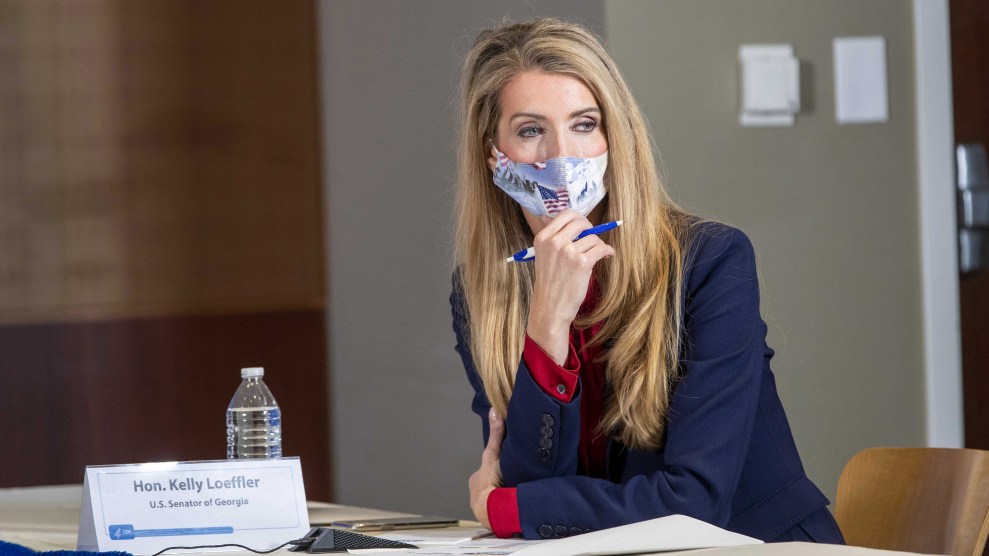

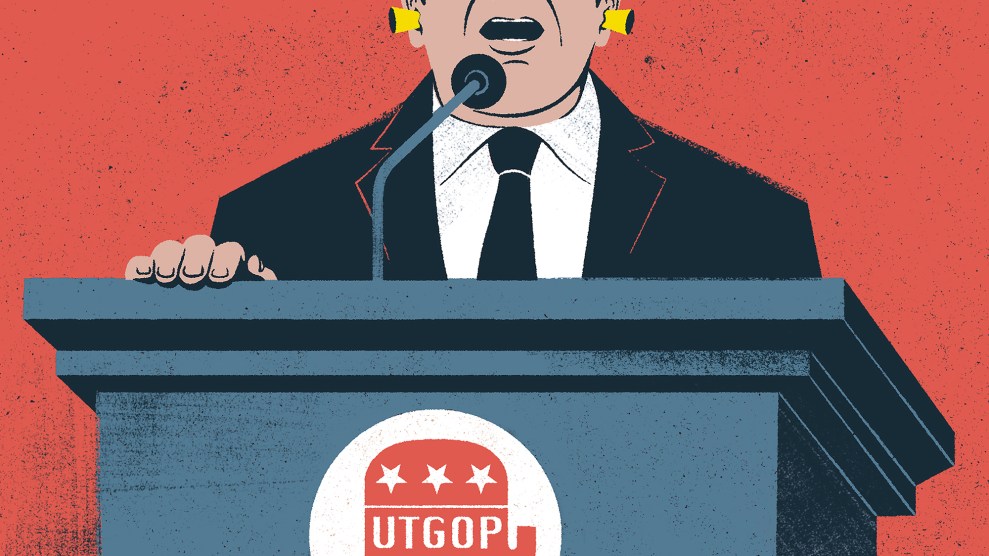

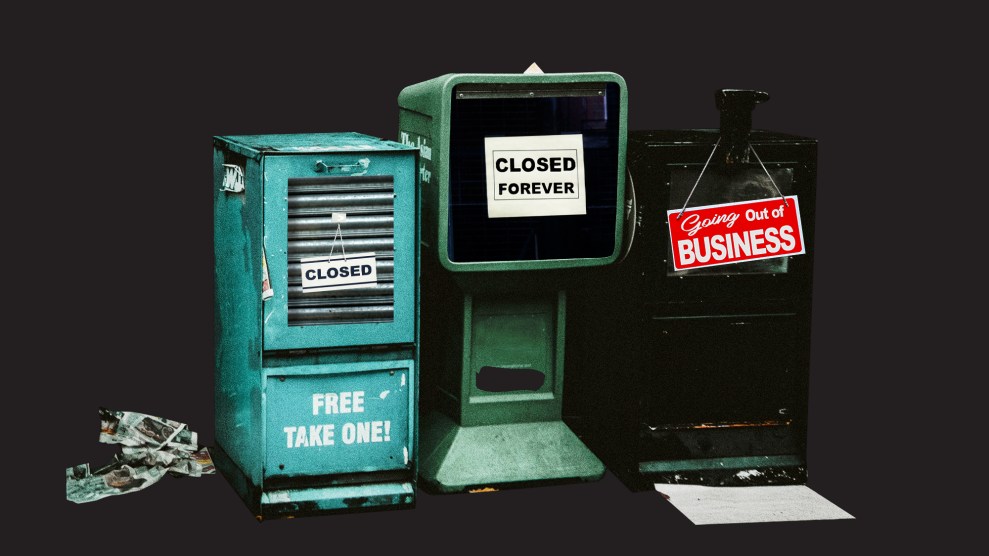


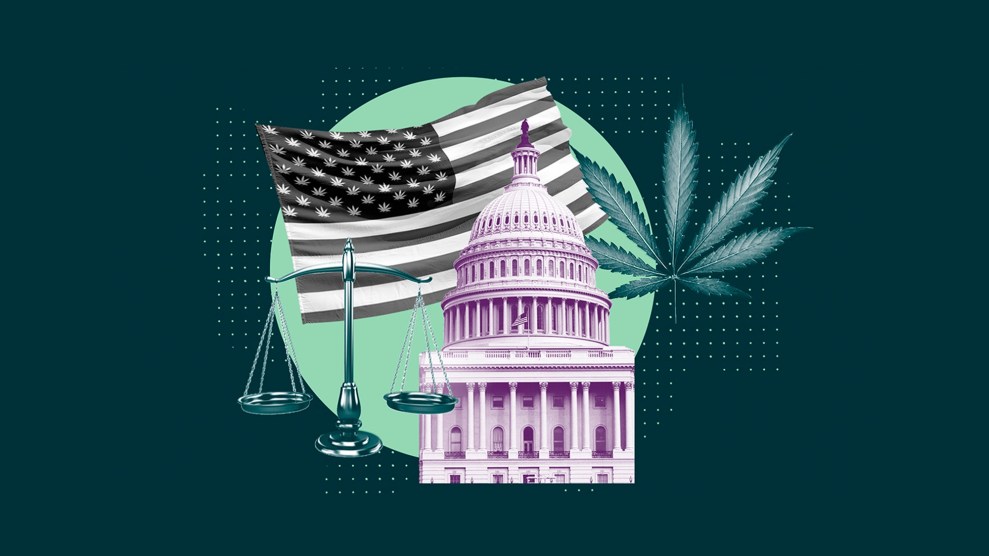
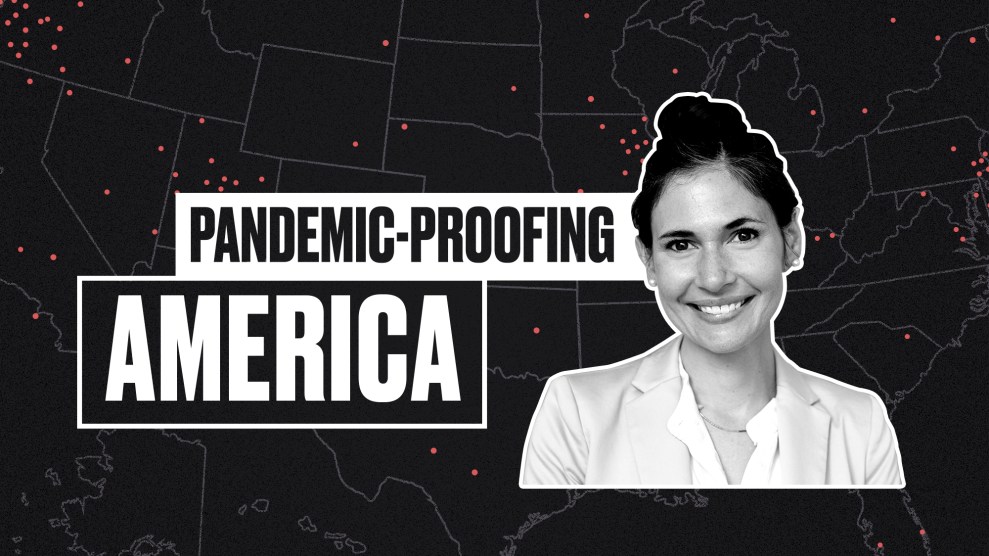


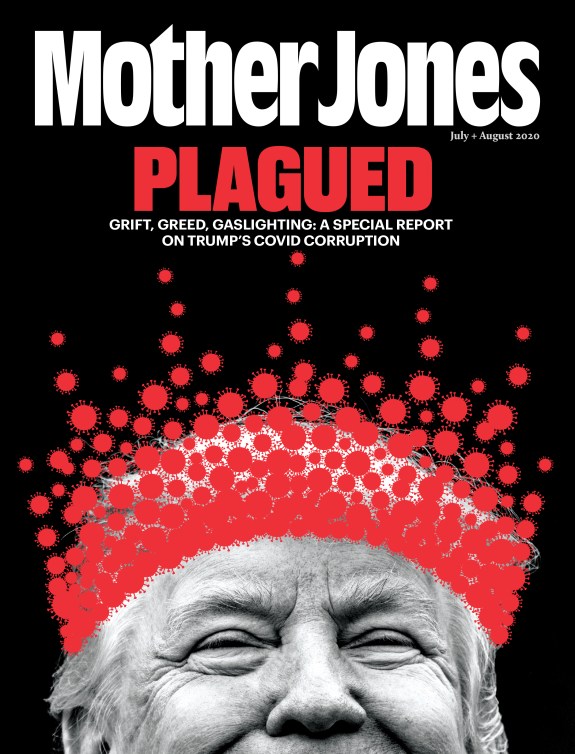
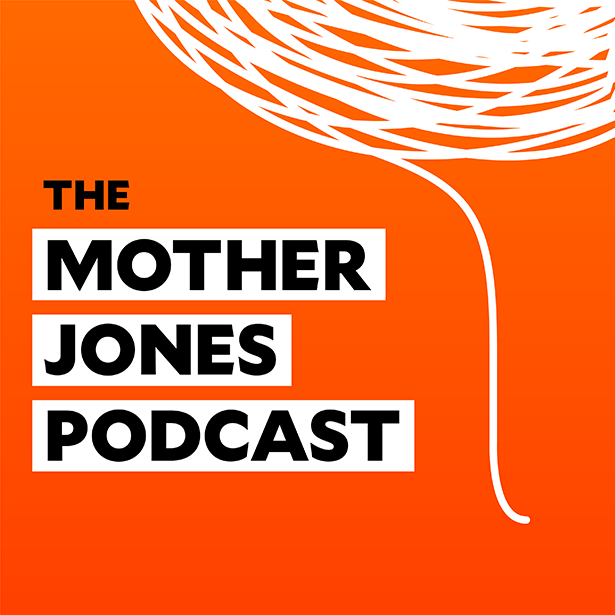




Nessun commento:
Posta un commento